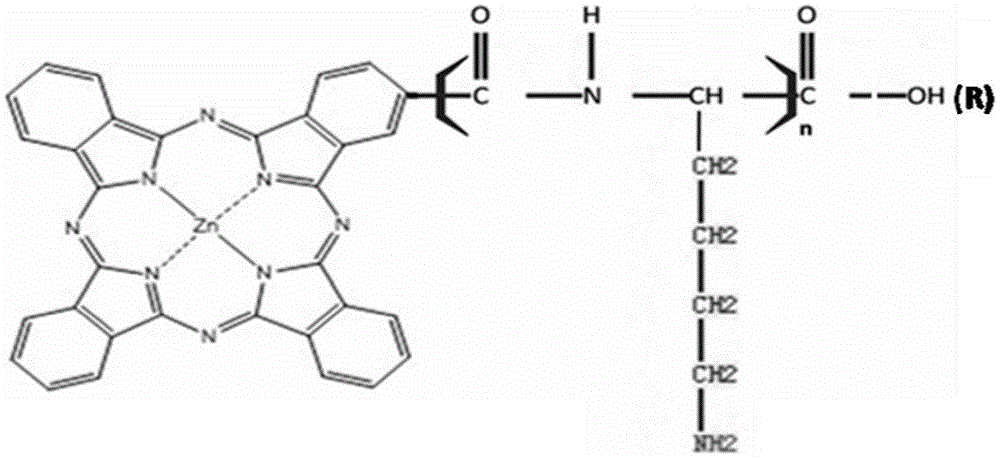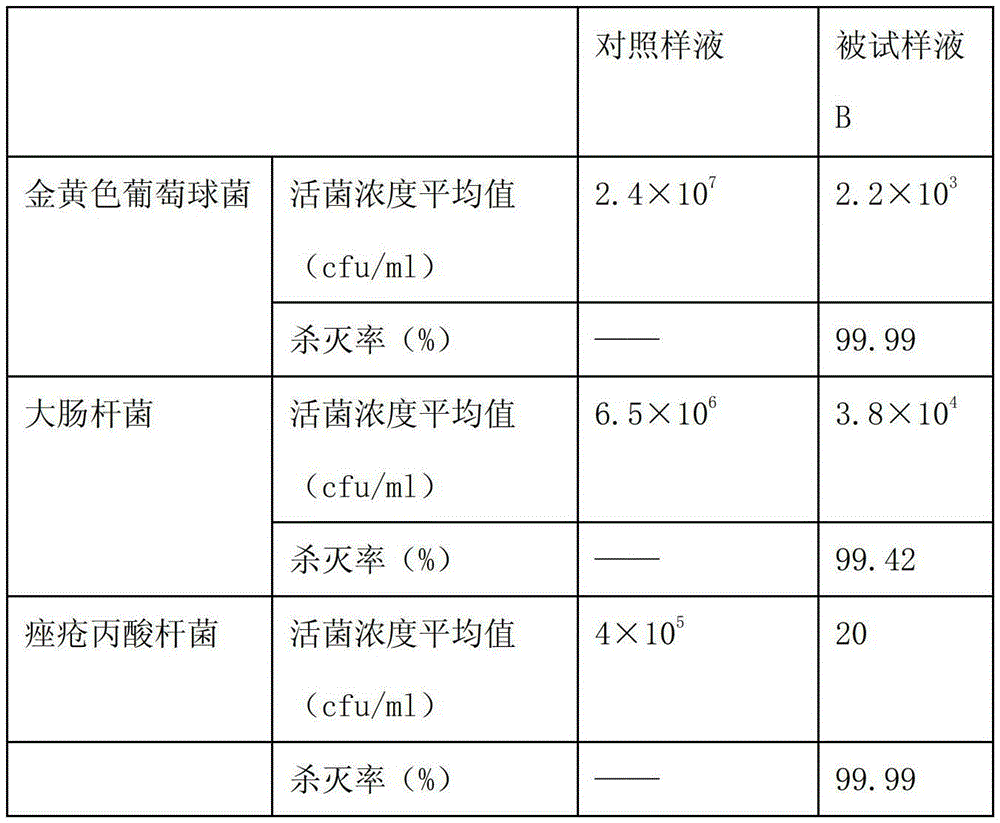Application of photosensitizer for treating acne
A photosensitizer and acne technology, applied in the application field of photosensitizers in acne treatment, can solve the problems of skin damage caused by drug-resistant antibiotics and cannot be used daily by patients, and achieve no drug resistance, good treatment effect and strong effect. Effect
- Summary
- Abstract
- Description
- Claims
- Application Information
AI Technical Summary
Problems solved by technology
Method used
Image
Examples
Embodiment 1
[0041] The strains used were Staphylococcus aureus (ATCC6538), Escherichia coli (ATCC8099) and Propionibacterium acnes (ATCC6919).
[0042] 1. Test preparation:
[0043] 1. Preparation of bacteria liquid: Wash the cultures of the test bacteria slant [Staphylococcus aureus (ATCC6538), Escherichia coli (ATCC8099), Propionibacterium acnes (ATCC6919)] with phosphate buffer respectively to make a suspension of Staphylococcus aureus. liquid, Escherichia coli suspension and Propionibacterium acnes suspension (requirement: the number of recovered bacteria is 1×10 4 ~1×10 6 cfu / mL).
[0044] 2. Preparation of control sample solution: normal saline with a concentration of 0.9%.
[0045] 3. Preparation of sample solution A: Use 0.9% normal saline to prepare a 0.0001% by weight amino acid phthalocyanine zinc solution.
[0046] 2. Test steps
[0047] 1. Take A5mL of the sample solution and put it in a test tube, add 100 μL of the prepared bacterial solution dropwise and mix evenly, us...
Embodiment 2
[0058] Except following difference, other is with embodiment 1.
[0059] 1. Test preparation:
[0060] 3. Preparation of sample solution B: use 0.9% physiological saline to prepare a 0.0005% by weight amino acid phthalocyanine zinc derivative solution.
[0061] 2. Test steps
[0062] 1. The 100mW LED light source with a wavelength of 680nm is illuminated from the bottom of the test tube for 2 minutes.
[0063] The test results are shown in Table 2:
[0064] The killing effect of table 2 embodiment 2 to bacterial strain
[0065]
[0066] The above test proves that the method of the present invention has obvious bactericidal effect on Staphylococcus aureus, Escherichia coli and Propionibacterium acnes under light excitation.
Embodiment 3
[0068] Except following difference, other is with embodiment 1.
[0069] 1. Test preparation:
[0070] 3. Preparation of sample solution C: use 0.9% physiological saline to prepare a salt solution of 0.000001% by weight amino acid phthalocyanine zinc derivative.
[0071] 2. Test steps
[0072] 1. The 100mW LED light source with a wavelength of 670nm illuminates from the bottom of the test tube for 3 minutes.
[0073] The test results are shown in Table 3:
[0074] The killing effect of table 3 embodiment 3 to bacterial strain
[0075]
[0076]
[0077] The above test proves that the method of the present invention has obvious bactericidal effect on Staphylococcus aureus, Escherichia coli and Propionibacterium acnes under light excitation.
PUM
 Login to View More
Login to View More Abstract
Description
Claims
Application Information
 Login to View More
Login to View More - R&D
- Intellectual Property
- Life Sciences
- Materials
- Tech Scout
- Unparalleled Data Quality
- Higher Quality Content
- 60% Fewer Hallucinations
Browse by: Latest US Patents, China's latest patents, Technical Efficacy Thesaurus, Application Domain, Technology Topic, Popular Technical Reports.
© 2025 PatSnap. All rights reserved.Legal|Privacy policy|Modern Slavery Act Transparency Statement|Sitemap|About US| Contact US: help@patsnap.com



